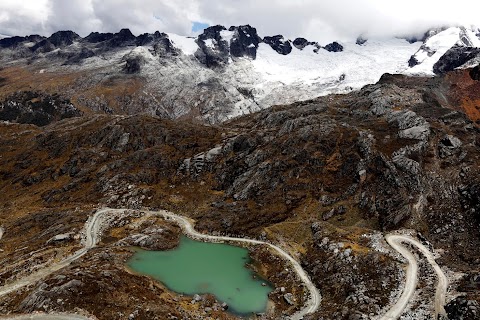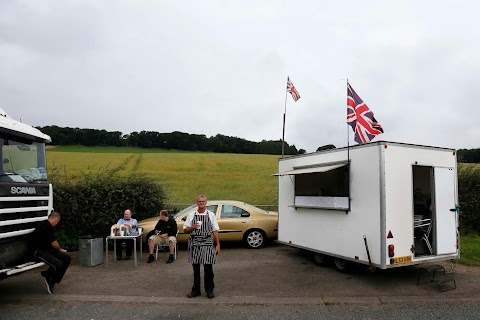
Chiatura's crumbling cable cars
 David Mdzinarishvili
David Mdzinarishvili
It might be battered, faded and stained with rust, but a cable car like this one is still the quickest and most convenient form of transport in the Georgian town of Chiatura.
Dating back to the Soviet era, these cabins were built to facilitate the manganese mining industry, the bedrock of the town's economy. Today, six decades after the cable car system opened, much of it is still running.

Of the original 21 cable car routes built in Chiatura, 15 still function today. Together they cover a total of over 6,000 meters (3.7 miles).
Slideshow

A conductor sits inside a 60-year-old cable car.

An old communication system is mounted on the window inside one of the vehicles.

Commuters chat inside a cabin.

A cable car passes over the treetops in Chiatura.

A commuter looks out of one of the cabins.

The window of a cable cars offers a dizzying view of the town.

A cable car travels over the mountainous landscape.

One of the cabins casts a shadow on a building.

Fifty-six-year-old Eliza Kobiashvili operates a cable car from her booth.

A commuter looks out of the window.

Malkhaz Kapanadze, 36, oils and checks a cable car as part of general maintenance work.

Operator Tea Kekenadze watches passengers climb aboard.

People sit in front of a peeling cable car station.

Commuters wait for the cable car to arrive.

A boy stands at the door of a rusty cabin.

Thirty-two-year-old Lasha Ghughunishvili pulls a lever as he operates part of the system.

A conductor closes the doors of a cable car before it departs.

A cable car sails over the town.
"For locals, the cable cars long ago became a symbol of the city."
Before stepping inside, I looked once more at the rust spots on the metal cabin with its cracked glass. The vehicle, repainted and patched up many times over, swung on its massive cable, ready for its next flight.
This was the first passenger cable car in the Soviet Union. Built in the 1950s to facilitate the manganese mining industry, the cars still run today without any great disruptions, and they haven’t required major repair work over the last 60 years.
During Soviet times, 21 passenger cable car routes were built. Fifteen of those, covering over 6,000 meters, are still working today. What’s more, due to the mountainous landscape of Chiatura, cable cars are the quickest and most convenient way of getting around and, despite their advanced years, they are also still one of the safest.
For locals, the cable cars long ago became a symbol of the city. Many will proudly tell you about their unique transport system.
Every line has its own peculiarities – the oldest is 60 years old, the steepest climbs at 48 degrees, another is the longest at 950 meters, still another rises highest to 190 meters, and so on. One man I met proudly said that a similar system had been built in Latvia, but the cabins have long since been in a museum, while Chiaturia’s cable car still runs.
Nevertheless, there are also many Chiaturians would prefer to see their cabins in a museum; they’d like the chance to ride in a comfortable, modern cable car.

Tiny blue cable cars pass above an industrial area of Chiatura.














